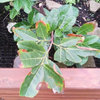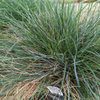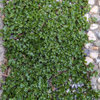Gnats killing indoor plant starts
Peaceful_Warrior
12 years ago
Related Stories

HOUSEPLANTS8 Houseplants You Can't Kill
They're forgiving and let you forget. Houseplants don't get any easier than this
Full Story
HOUSEPLANTS8 Essentials for Healthy Indoor Plants
Houseplants add so much to our homes — and can thrive when grown in the right conditions. Keep these tips in mind
Full Story
MOST POPULARHow to Start a Cool-Season Vegetable Garden
Late summer and late winter are good times to plan and plant cool-season crops like salad greens, spinach, beets, carrots and peas
Full Story
HOUSEPLANTSHow to Grow Orchids Indoors
Orchids are the exotic aristocrats of the flower world and can make themselves comfortable in almost any home
Full Story
GARDENING GUIDES10 Tips to Start a Garden — Can-Do Ideas for Beginners
Green up your landscape even if you're short on time, money and knowledge, with these manageable steps for first-time gardeners
Full Story
HOUSEPLANTS10 Top Plants to Grow Indoors
Brighten a room and clean the air with a houseplant that cascades artfully, stretches toward the ceiling or looks great on a wall
Full Story
GARDENING FOR BUTTERFLIESA Quick-Start Guide to Bird-Watching for Fun and Learning
Set out some seed and grab your field guide. Bird-watching is an easy, entertaining and educational activity for the whole family
Full Story
HOUSEPLANTSIndoor Winter Gardens for Cheerier Days
Bring plants inside for drab-days mood boosting — not to mention cleaner indoor air and protection for your greenery
Full Story
HOUSEPLANTSPlay Up Some Fiddleleaf Figs for a Lively Indoor Tune
Strike a dramatic chord in a minimalist scene or a country note in a rustic setting — fiddleleaf fig plants harmonize with any style
Full Story
FALL GARDENINGWhy Fall Is the Best Time for Planting
Spring is overrated for planting. Starting plants in autumn has advantages for both garden and gardener
Full StoryMore Discussions











ken_adrian Adrian MI cold Z5
morz8 - Washington Coast
Related Professionals
Brentwood Landscape Architects & Landscape Designers · Graham Landscape Architects & Landscape Designers · Manorville Landscape Architects & Landscape Designers · Oatfield Landscape Architects & Landscape Designers · Saint Louis Park Landscape Architects & Landscape Designers · Walnut Landscape Architects & Landscape Designers · San Juan Landscape Architects & Landscape Designers · Medford Landscape Contractors · Wakefield Landscape Contractors · Cockeysville Landscape Contractors · Davis Landscape Contractors · Elmhurst Landscape Contractors · Framingham Landscape Contractors · Galveston Landscape Contractors · Mount Kisco Landscape Contractorsrhizo_1 (North AL) zone 7
Kimmsr
ronalawn82
Peaceful_WarriorOriginal Author
ken_adrian Adrian MI cold Z5
rhizo_1 (North AL) zone 7
Peaceful_WarriorOriginal Author